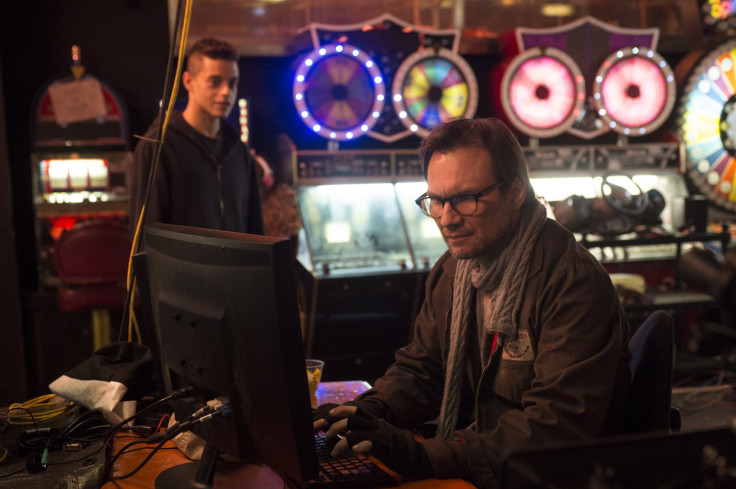Why USA Network's 'Mr. Robot' Is The Most Realistic Depiction Of Hacking On Television

“Mr. Robot,” USA Network’s newest series, faced an uphill battle when it premiered in June. After the recent unrealistic and absurd depictions of hacking in the movie “Blackhat” and CBS’ “Scorpion” and “CSI: Cyber,” there was reason to assume "Mr. Robot" wouldn't be much different. But it is. With its frequent use of Linux and its focus on social engineering, the series has turned out to be one of the most plausible and accurate Hollywood properties about hacking. Even the hacker collective Anonymous thinks it's great.
“ 'Mr. Robot' is the most accurate portrayal of security and hacking culture ever to grace the screen,” a member of Anonymous told International Business Times in a webchat.
The realism of the series' depiction of hacking culture is due in large part to Michael Bazzell, a technical consultant hired by creator Sam Esmail. Bazzell, a cybersecurity consultant who worked for the FBI's cybercrime division for almost 18 years, will read scripts to check the plausibility of the hacks and to ensure that everything is accurate. There have been times when Bazzell has noticed something in a script was not realistic and Esmail has redeveloped the storyline.
It's this commitment to accuracy that convinced Bazzell to sign on. He was initially apprehensive because of Hollywood's tendency to portray hacking culture inaccurately.
"My biggest complaint on a lot of those [movies and TV shows] is the time element — that they can hack anyone's password in 10 seconds," Bazzell said. "This show has a respect that these things can take time, and the biggest thing I believe is that this show has respect that things don't always work out."
"Mr. Robot” (Wednesdays 10 p.m. ET/9 p.m. CT) follows Elliot (played by Rami Malek), a talented but anti-social programmer who works as a cybersecurity engineer at a firm with many corporate clients by day and a white hat hacker/cyber vigilante by night, taking down everyone from peddlers of child pornography to sociopathic drug dealers. Mr. Robot (Christian Slater), the leader of an Anonymous-like underground hacking group looking to wage war on the 1 percent, enlists Elliot to help them target E-Corp, a multinational firm that Elliot is paid to protect.
On screen, we're used to seeing hackers, often bespectacled and locked in their parents' basements, typing away furiously at their computers. There isn't a problem that can't be solved with typing as fast as possible and slinging around faux techno-babble like “I'll build a GUI interface using visual basic to track the IP address." They hack into places like the National Security Agency and bypass firewalls with ease, and their screens are filled with either gibberish pretending to be computer code or fancy CGI graphics added in postproduction.
In "Mr. Robot," Elliot and his cohorts are shown using Linux instead of Windows or another operating system because that's what they would be using. Computers screens are filled with real code, and the show doesn’t use green screens. (Esmail actually has a no green screen rule) . There’s an emphasis on social engineering and email phishing. Also, the dialogue is filled with actual jargon that a hacker would understand. For example, in the pilot, Elliot busted a coffee shop owner who also was in the business of child pornography. Elliot uncovered the owner's porn site because he was running it on the coffee shop's unprotected WiFi network and the software he was using to hide it wasn't as secure as he thought.

The hacks we see on screen are very real. In the third episode, a character is shown installing spyware on another person's Android phone. On any other show, this would've been faked, but, as a detailed piece on Medium points out, the intrusion shown is a legitimate malware exploit.
Bazzell thinks Esmail and the writers not only nail the technology, but also the culture of hacking, which is something that's often misrepresented.
"Hackers aren't always perfect. They often fail," Bazzell said. "They lead normal lives like the rest of us. They have jobs, they have feelings, they're normal people. I think a lot of times the screen tends to show a hacker as something that they're not."
For a show that's so concerned with technology, there's a lot of focus on the human element. In lieu of penetrating firewalls, we see the characters engage in social engineering, a method of intrusion where you trick your intended target into divulging information that will give you access. As the member of Anonymous described it, "It's the art of sounding like you're in charge or like what you're asking is legitimate."
In the pilot, we see Elliot, in white hat hacker mode, use social engineering to gain access to his therapist's new boyfriend's email and bank accounts by calling him and pretending to be someone from his bank. You wouldn't know this from most movies and TV shows, but social engineering is a pretty important item in a hacker's toolkit.
"Gathering information about a target remotely is easy, but learning about the person behind the screen is important, too. You can't always gather that information with Google or Spokeo," a site used to find people based on usernames/email, the member of Anonymous said.
In the real world, Bazzell said, most breaches we hear about start with social engineering. He said they usually occur through a malicious email or by tricking an employee. Hackers in real life and on the show are more likely to use email phishing to gain access to a corporation because humans are more fallible targets than computers.
© Copyright IBTimes 2025. All rights reserved.






















